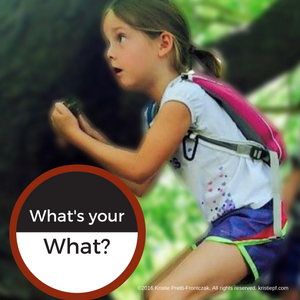 Remember playing the board game Clue as a kid? To win, you had to figure out who committed the crime, where it was committed, and which weapon was used. So what does this have to do with designing intentional instruction for children?
Remember playing the board game Clue as a kid? To win, you had to figure out who committed the crime, where it was committed, and which weapon was used. So what does this have to do with designing intentional instruction for children?
Well, when my colleagues and I talk about designing intentional instruction, we ask teams to “play detective” and based upon the evidence, create learning opportunities that are effective and efficient.
To this end, they are invited to walk through five steps. First, teams determine “what” they are teaching. This is followed by figuring out “when” it can be taught and “where”. Then things start to get fun because they get to think about the “toys and materials” that can be used to support learning. The final step is to determine “how” to teach the “what.”
Starting to see how playing the game Clue is a bit like designing intentional instruction?
For me, at the core of intentional instruction, is the ability to create learning opportunities where I’m clear about “what” is being taught, “when”, “where”, “with what”, and “how”.
Sounds pretty straightforward right?
Well, just like in the game Clue, we don’t want to jump to conclusions too quickly…there are penalties if we offer a guess without doing enough detective work.
In working with children, if we don’t start with being clear about “what” we are teaching, even if we pick the best “how,” it won’t have the desired impact.
And the reason we don’t clearly define the “what” is often due to being in a hurry or being distracted from the “what” and immersed in the “how.”
This is particularly true for coaches and consultants. All too often, we take off our “detective hat” and put on our “problem-solving hat.” We jump to “how” a teaching team might do something, vs. staying long enough to collect sufficient clues about “what” the presenting problem is or “what” the desired child outcome is.
In the download for this post, I offer a few sentence starters for getting to the heart of the “what,” in two situations. The first being when you are trying to dig deeper into the “what” behind a referral, a concern, or an issue that has been raised. The second being when you are trying to dig deeper into “what” should be the outcome for a given child or group of children.
The sentence starters I offer were generated following guidelines set forth by Parker J. Palmer, John Morefield, and Marcy Jackson, and inspired by work conducted at the Center for Courage and Renewal on asking open and honest questions. Asking open and honest questions invites us to use questions that start with “what”, “when”, “where”, “who”, or “how” versus “why”.
And if that weren’t enough, there is least one more situation when we need to think of “what” before “how”.
That situation?
When we are designing transformative professional development for adult professionals.
Meaning…before we consider if we should offer a professional learning community, facilitate a book study, have learning stations, use the “I do, We do, You do” strategy, etc. etc. etc. we need to get really clear on our signifiant learning out comes.
What is it that you want as a result of your professional development offering?
Are you focused on compliance? Competence? Confidence? Maybe even compassion!
To help, I’ve created a series of sentence starters for writing significant learning outcomes. The sentence starters are based upon the work of L. Dee Fink. These sentence starters help you transform your professional development by starting with “what” before “how” AND by helping you consider the wholeness of the adult professional.
Here are a few examples of signifiant learning outcomes for professional development centered on the importance of social-emotional health and well-being of children:
-
- If your desired outcome relates to the foundational knowledge, you would set outcomes such as, “Participants will understand the concept of “Teach Before The Peak” and how it applies to helping children remain in the optimal zone for learning.” or “Participants will know the 12 ways they can reduce stressors to support children’s learning and development.”
- If your desired outcome relates to the application of what was discussed, you would set outcomes such as, “Participants will learn how to manage the complexities of children’s strong emotions, or “Participants will explain how stressors affect children’s ability to self-regulate.”
- If your desired outcome relates to the integration of the content, you would set outcomes such as, “Participants will make connections between current policies for addressing challenging behaviors and current research on brain development.” or “Participants will compare and contrast current beliefs and practices around classroom and behavior management and recommended practices.”
- If your desired outcome relates to the human dimension of the content, you would set outcomes such as, “Participants will gain skills to better interact with children with behaviors that challenge them.” or “Participants will revise their own mindset when it comes to their approach to classroom and behavior management.”
Download nearly 30 sentence starters by entering your name and email below…because the best way to design any professional development is to begin with “what” you want as a result and then the “how” will flow effortlessly.
P.S. After you’ve had a chance to try out the sentence starters…come over to FaceBook and share if they kept you from getting distracted by irrelevant clues or rushing too quickly to offer a solution.